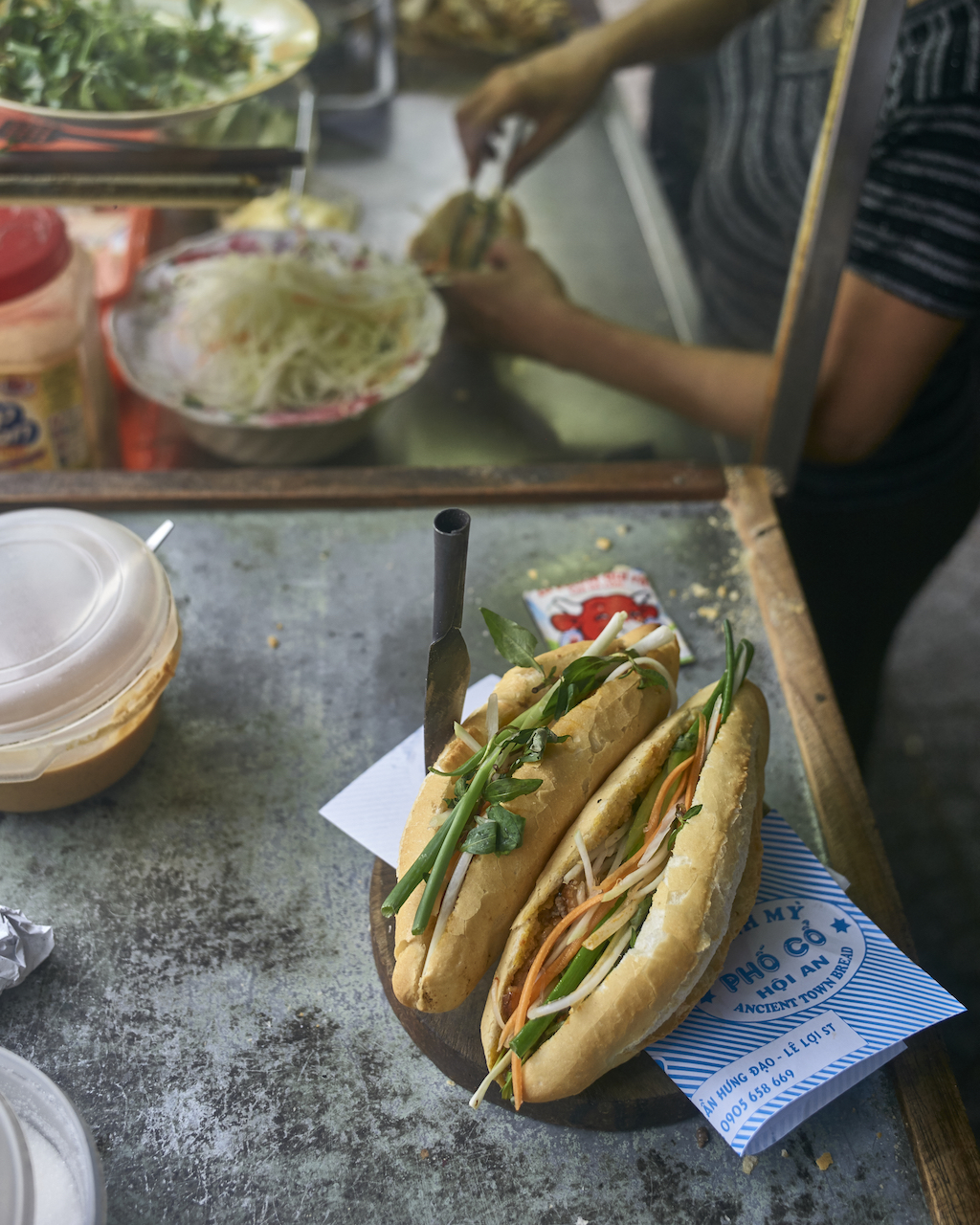
Walking through Hoi An’s central wet market, the pony-tailed Tran Thanh Duc (aka “Duc Mango”) stops to admire the abundance of fresh produce all around us – tropical fruits, vegetables, aromatic herbs, spices and a still-squirming squid. “I’ve been here for 17 years and I feel like I haven’t even broken ground with what I can do with all of this food,” the youthful-looking 50-year-old says. “It’d blow any chef’s mind to see what we have within our reach.”
An effervescent character, Duc decides he’ll cook us lunch and leads me along the bank of the Thu Bon river into the heritage zone, where all four of Duc’s restaurants can be found. From the 15th to 19th centuries, the river helped Hoi An flourish as the region’s most lucrative trading hub, triangulating the covert trade lines that ran between Japan and China. Foreign merchants from both countries settled and built homes, pagodas and temples, and today 1,107 centuries-old timber-frame buildings still stand on a 30-hectare area that was declared a Unesco World Heritage site in 1999.
For the throngs of tourists who visit these ancient streets, discovering the local culinary heritage is an essential part of a day’s itinerary – in particular, they come for the banh mi (Vietnamese baguette), com ga (a warm chicken-rice salad) and the shrimp and pork dumplings known as White Rose (after their petal-like appearance), all sold at street stalls but also seemingly available at every second restaurant.
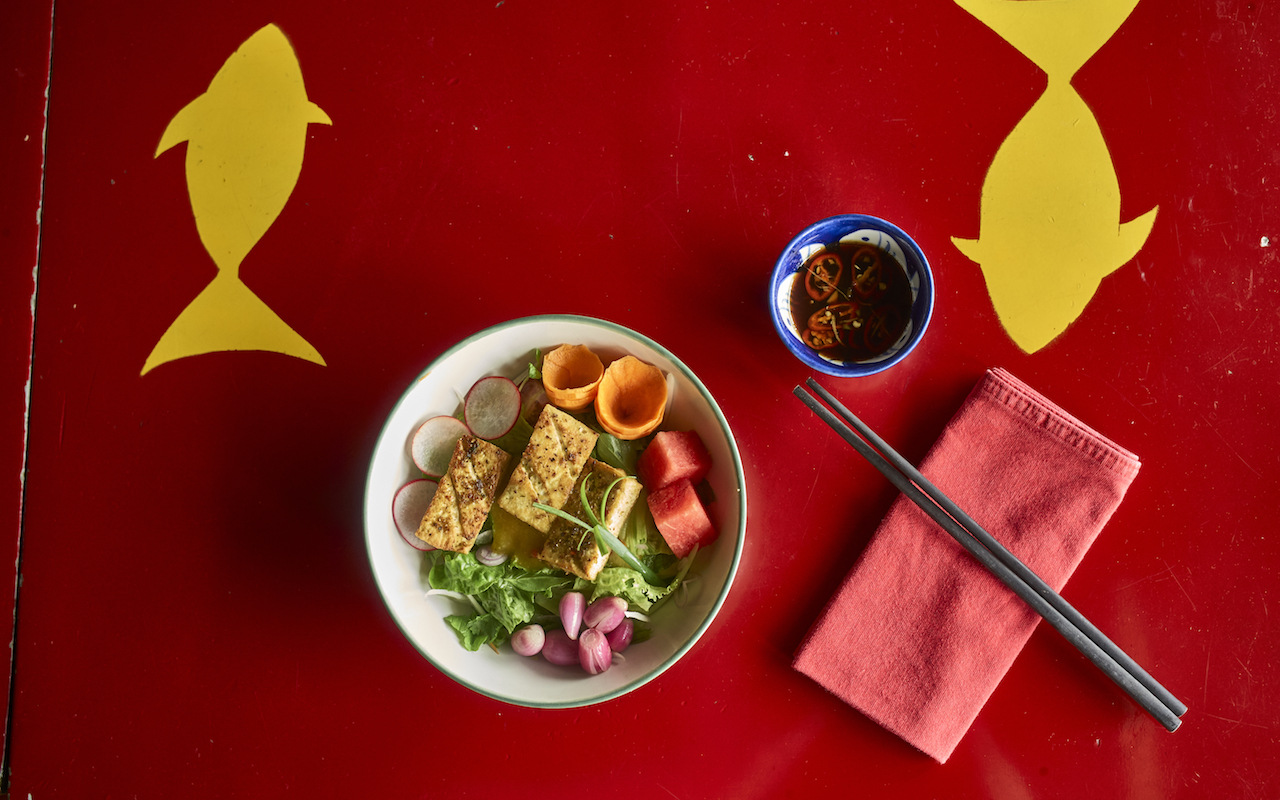
Plum in the middle of the heritage zone, Duc’s first restaurant, Mango Rooms, is a full house when we stick our heads in the door. “Mick Jagger couldn’t get a table here either,” Duc says, recalling a time when the Rolling Stones’ frontman had to be turned away from the 15-year-old institution. But just as Jagger did, we simply cross the river to Duc’s second restaurant, Mango Mango. Established in 2008, it also highlights his fondness for bright primary colours and all of the Latin flavours he absorbed, first as a teenage refugee in southeastern Texas, where he lived through the ’80s and ’90s, and later from his many wanderings through Central and South America.
After cooking (and surfing) around the world, Duc returned in 2003 to live in the motherland, but unable to recognise his original hometown of Saigon in the rapidly developing Ho Chi Minh City, he jumped on a tourist bus bound for Hoi An. He experimented with local ingredients for a year before putting his last chunk of savings into Mango Rooms.
Duc admits he struggled to make an impact initially – his main marketing strategy was using his irrepressible charm to coax tourists at the beach to come check out his food. “People were coming to Hoi An for the history and specialities like com ga; they didn’t stick around for long,” Duc says as we sit at Mango Mango’s nautically themed lounge-bar, tucking into classic “Duc Mango creations”: a zesty tuna ceviche; grilled red snapper encrusted with cashew nuts and coriander seeds; and giant prawns flavoured with passionfruit juice served in a garlicky butter sauce with a touch of bitter chocolate. The Latin American influences in Duc’s cooking are obvious but the dishes are entirely composed of local ingredients.
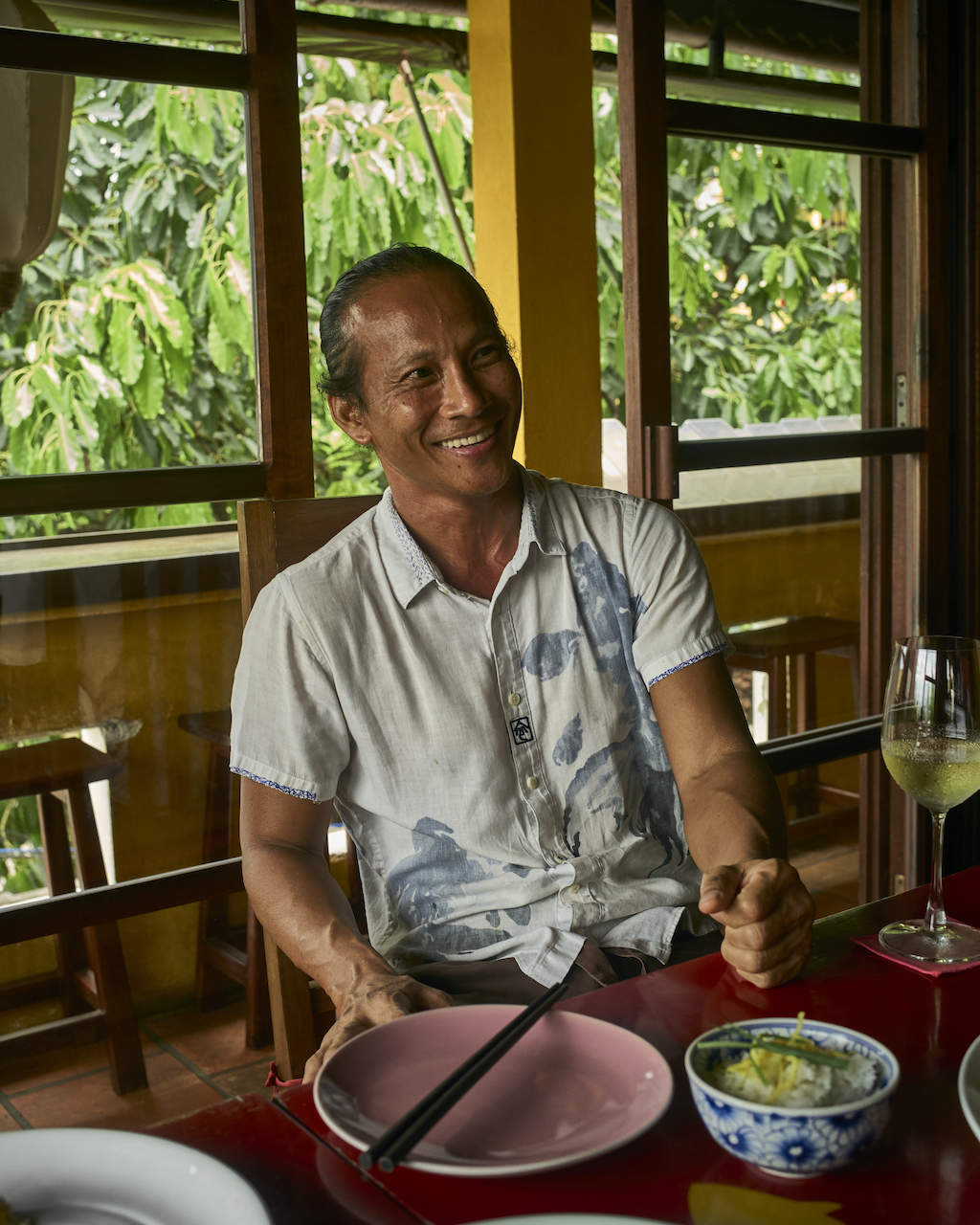
After opening his third eatery, Mai Fish, in 2012, Duc began to consider slowing down and sticking with what he had. But then his good friend and fellow chef, Ben Attwater, suggested doing something “next level” for Hoi An, a restaurant so good it would be a destination in itself.
We walk back along the river to meet up with Attwater at ThirtySeven Woodfired Grill, which opened a few hundred metres from the central market in December 2018. It features several components: a funky front-of-house cocktail bar, an open courtyard and a riverside terrace. Nearly everything was built from scratch by local artisans, including the asado (Argentinian-style rotisserie). The atmosphere is laid-back and unfussy, even if the food is on par with the country’s finest high-end restaurants. Each dish features its own set of intense flavours, bold colours and moreish textures.
“Hoi An has long been seen as a destination for great food”
As the gloaming thickens over the river, I make short work of a beef tartare (made with quail eggs and a fermented chilli paste) and tiradito (barracuda, a hint of local green chillies, lime leaf ) before carving into a delectable slow-roasted lamb shoulder served with a spiced yoghurt salsa.
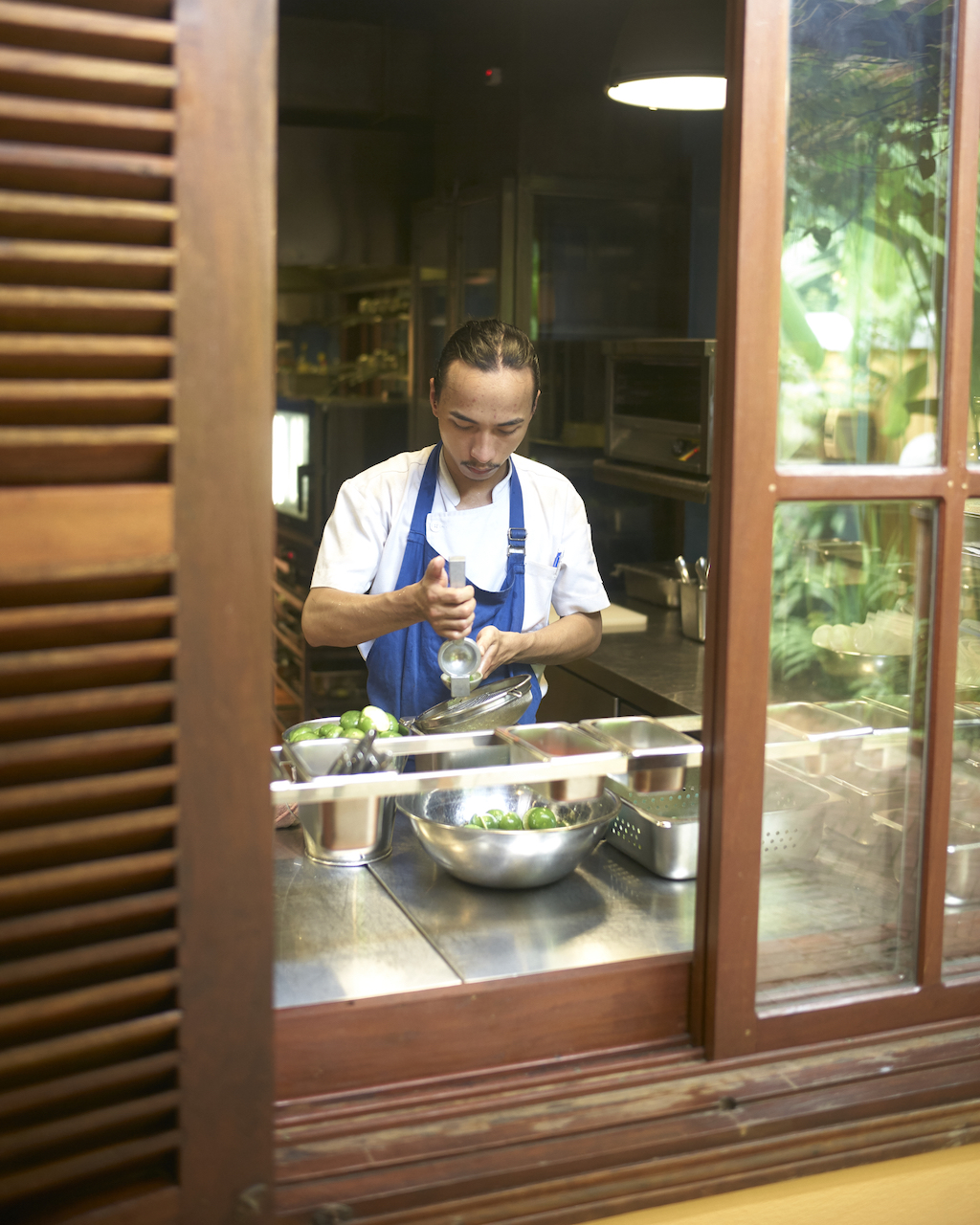
“Hoi An has long been seen as a destination for great food, but as the city grows, we felt like we could help spearhead a new scene,” says the 35-year-old Attwater. “It’s just the beginning but the great thing is we know we’re not alone in what we’re trying to achieve here. We hope to collaborate with local restaurants and invite exciting young chefs from around Southeast Asia to Hoi An for dinners at ThirtySeven.”
The affable Australian chef acknowledges that it’s Hoi An’s startling growth that has generated demand for a more diverse food scene, which in turn has created unprecedented opportunities for restaurateurs. In 2018, the total number of visitors to Hoi An reached nearly five million, a jump of just over 50% on the previous year. With a greater variety of accommodation, all within walking distance to the city, ThirtySeven doesn’t require Duc to ride to the beach and charm random tourists into making a reservation.
After our dinner at ThirtySeven, Duc suggests I visit another new eatery called Tadioto, less than a minute away on foot, opened by Nguyen Qui Duc, a writer, art curator and restaurateur, who divides his time between Hanoi and Hoi An. “Back in the 1960s, my grandfather used to call Hoi An a one-cigarette town; there wasn’t much to make you stick around,” says “Tadioto Duc”. “Nowadays, well here I am…”
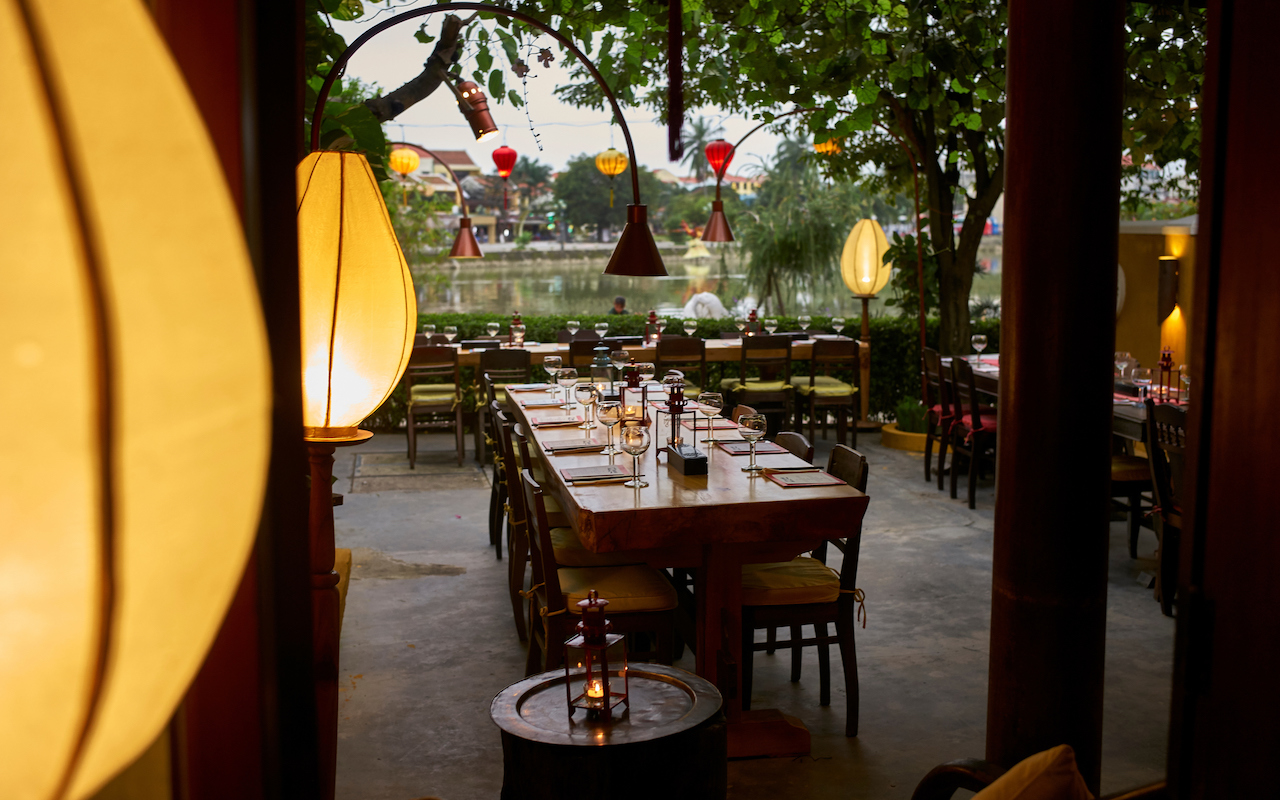
Although he was raised in Dalat, Tadioto Duc’s mother lived here as a child, and he was inspired by the mysterious charm of a typical period home (usually 80 to 100m long) for his Hoi An outpost. Within this singular structure, there are ornate courtyards for alfresco dining, and two separate bars – one for sake, another for whisky or wine. Wherever you sit, you can order a bowl of ramen, sushi or a banh mi.
When I arrive at the centre of this wunderkammer, Tadioto Duc is holding court among friends of his from Hanoi, here to taste-test his latest idea: miso ramen with crispy duck. “In Hoi An, why shouldn’t we add something Chinese to a Japanese dish?” he asks his guests, considering the town’s Sino-Japanese history.
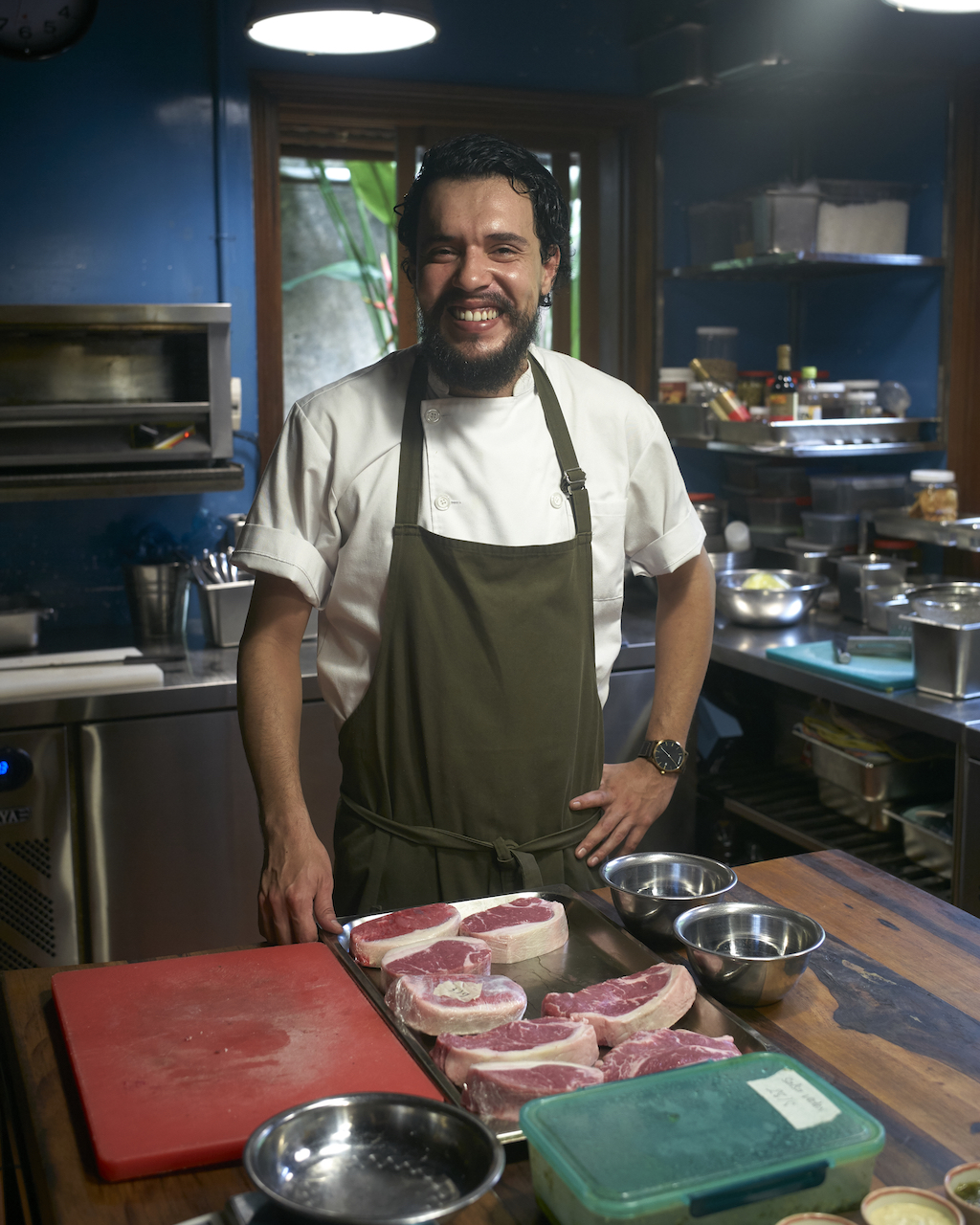
Indeed, as I continue my own food-focused explorations over the next 48 hours, I graze both on multicultural offerings – some age-old (the aforementioned White Rose were introduced by Hokkien Chinese), others brand new (at the eatery Nu, they make rice fettuccine with a pork ragu flavoured with the Vietnamese herb, la lot).
On my last day, I drop in to another innovative newcomer, Bosgaurus Coffee, managed by the two-time national barista champion, Tran Han, a hip, inked 24-year old from Ho Chi Minh City, who captures the contemporary spirit of Hoi An – extremely respectful of the past, but wishing to add something new into the mix.
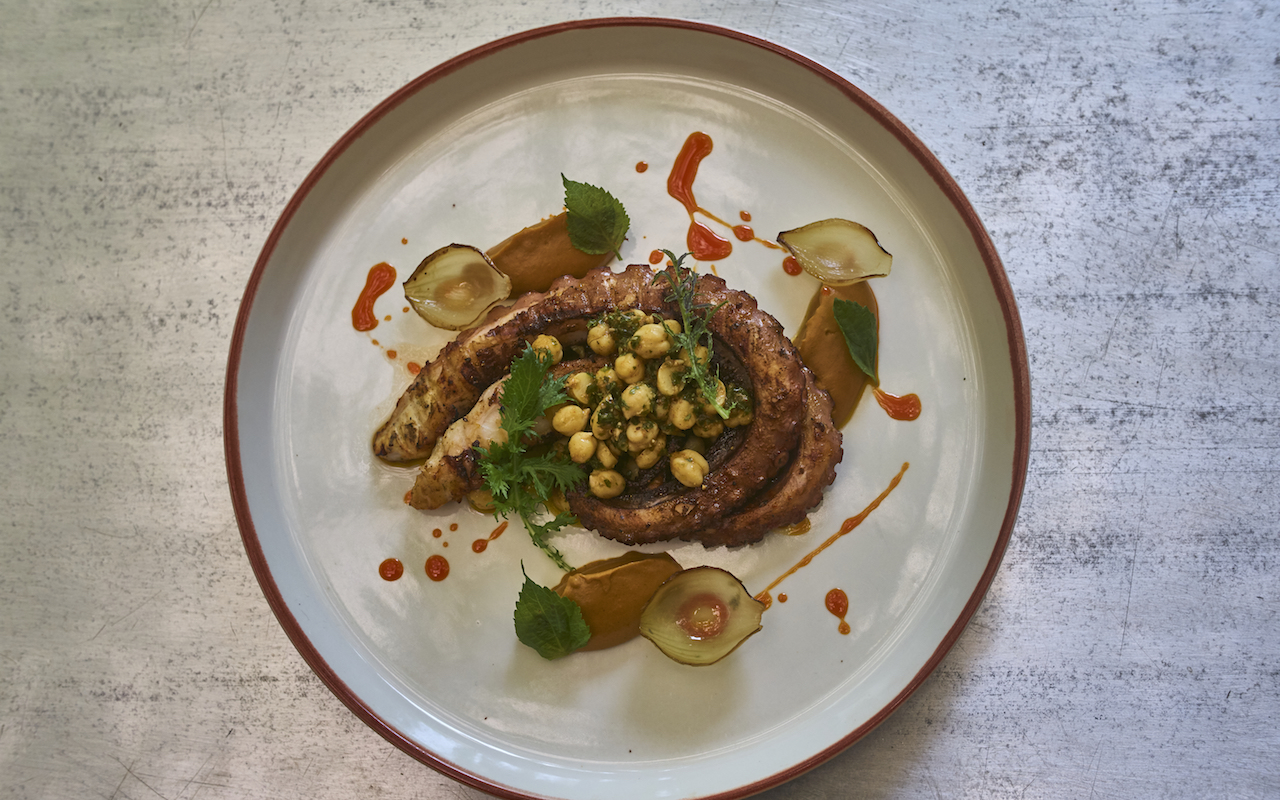
“We know this is a historic town with many strong traditions, including the old-school drip filter coffee, which I hope never disappears. But I believe that our speciality coffee and modern style can co-exist with the old ways in Hoi An,” Han says as she whisks up her signature creation, the Big Smoke ca phe sua da (iced coffee made with condensed milk), which she makes with espresso using high-grade, smoky arabica beans from the Central Highlands.
Also dropping in for his morning’s caffeine fix minutes later is none other than Duc Mango, who already has a twinkle in his eye despite the early hour. “What would you prefer to see in Hoi An – a champagne and oyster bar or a little Peruvian place making classic ceviche and Pisco sour?” he asks. “Either way, I keep telling Ben, we need to open another restaurant…”
Where to find Vietnam’s best street food
1. Banh mi
At Banh Mi Pho Co, the owners have a “less is more” approach – roast pork belly, herbs, shredded carrot, a dash of soya sauce and a smidge of chilli sauce.
Under the tamarind tree where Le Loi meets Tran Hung Dao
2. Com ga
At Com Ga Ba Ho, this ubiquitous dish features yellow rice (steamed in chicken broth) topped with shreds of chicken, fresh coriander, onion and lime juice dressing. Add soya sauce and chilli jam to taste.
16 Phan Chu Trinh
3. Mi Quang
Visit Quang My Ong Hai for mi quang (tagliatellewide, turmeric noodles topped with shrimp, chicken and/or pork, crushed peanuts, shallots, herbs and prawn crackers).
6A Truong Minh Luong
Where to stay in Hoi An
1. Heron House
This boutique stay features three spacious suites in a French-style chalet. All the staff are cooks and they’ll happily design a special menu for guests, who can concentrate on relaxing by the garden pool.
2. Anantara Hoi An Resort
The town’s outstanding luxury hotel boasts superb services and amenities, all set in lush tropical gardens right on the bank of the Thu Bon. Guests can easily access the historic town centre by strolling along the promenade.
3. Little Hoi An Riverside
Conveniently located by the central Hoi An Market, and perched right on the riverfront, this boutique resort also features a rooftop infinity pool, a spa and a riverside restaurant.
SilkAir flies daily between Singapore and Danang. To book a flight, visit singaporeair.com
SEE ALSO: The truth behind Hoi An’s legendary noodle dish
This article was originally published in the November 2019 issue of Silkwinds magazine
The post Old town, new tastes: Hoi An is positioning itself as a foodie hotspot appeared first on SilverKris.
from SilverKris
No comments:
Post a Comment